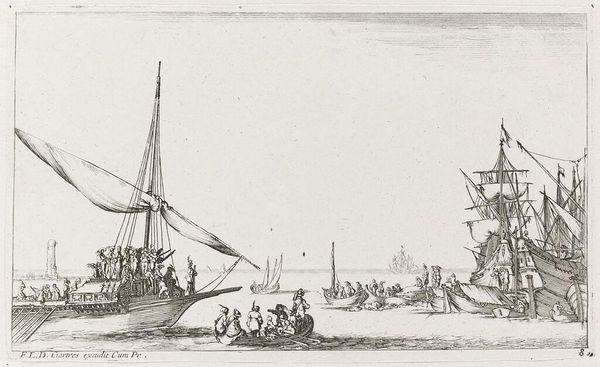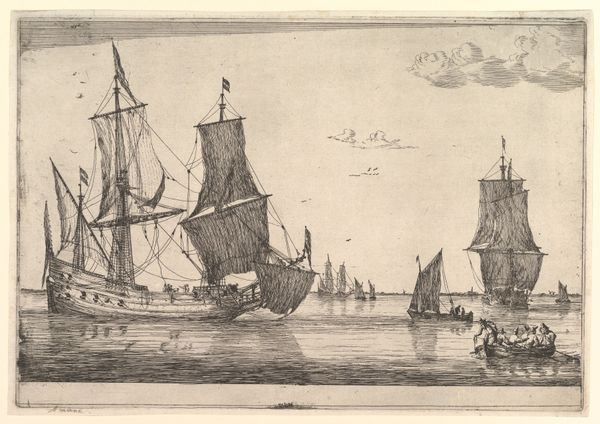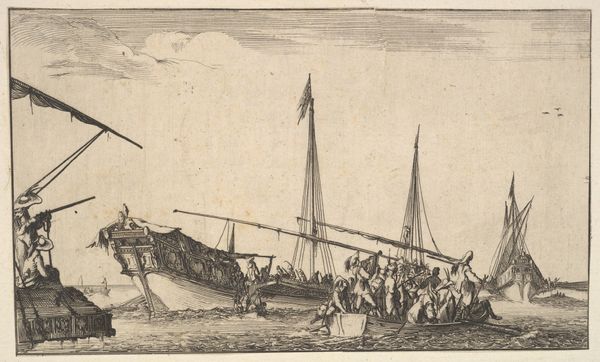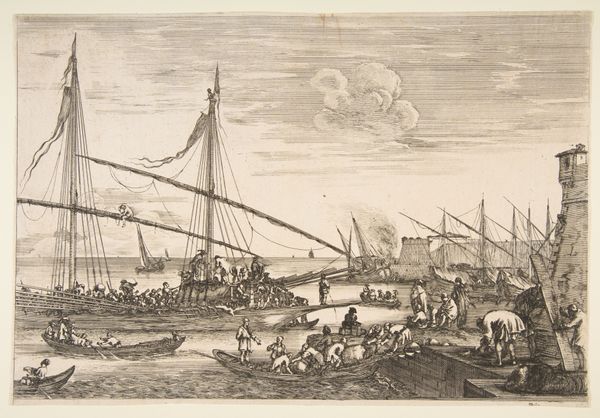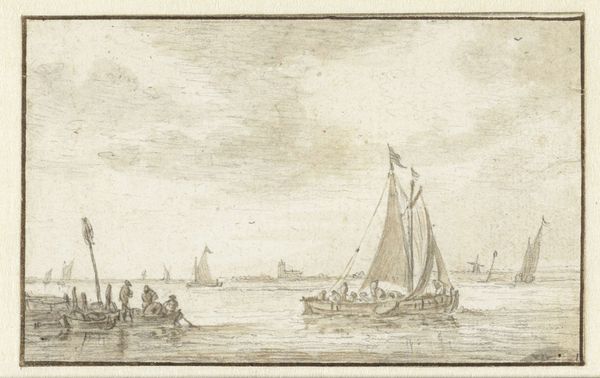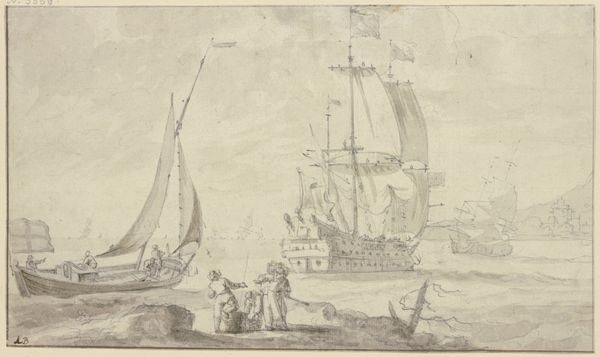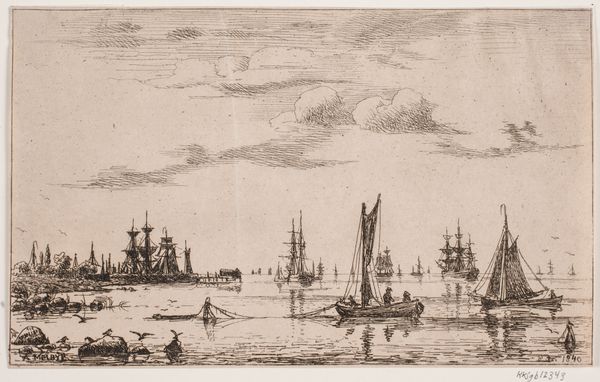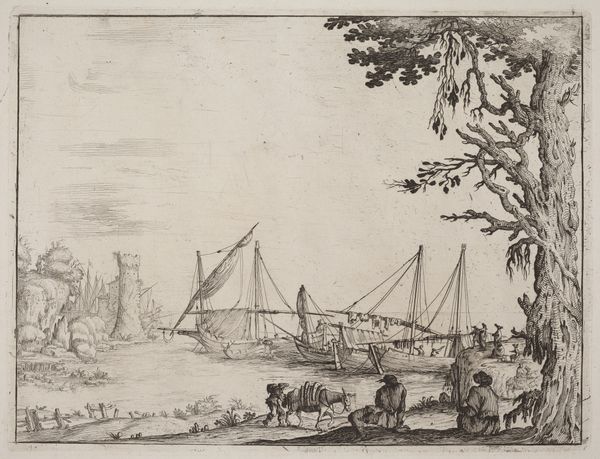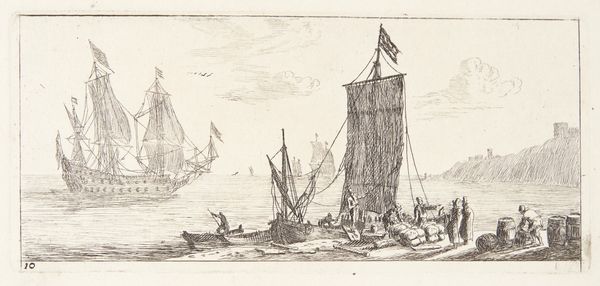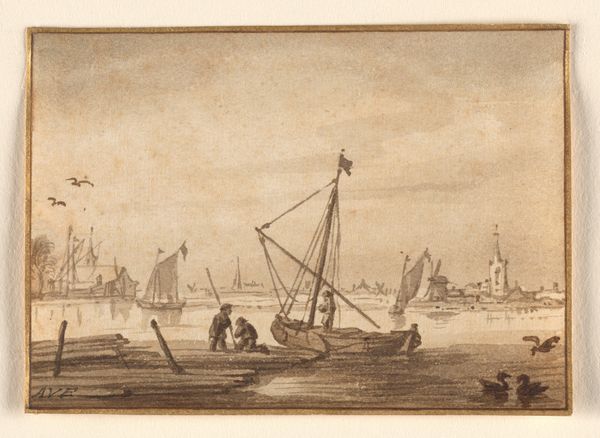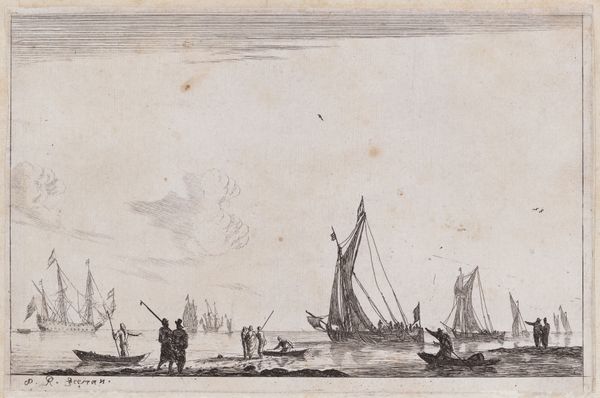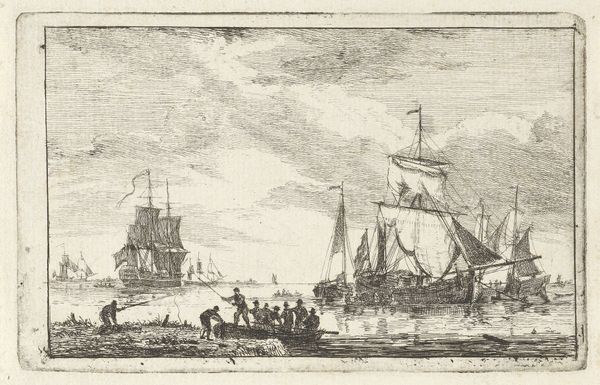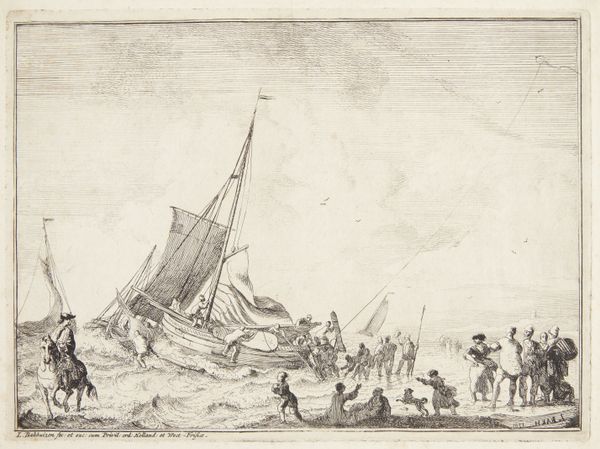
A galley arriving at port to left, several rowboats in center, ships at port to right, from 'Set of eight nautical landscapes' (Suite de huit Marines) 1639
0:00
0:00
drawing, print, etching
#
drawing
#
baroque
#
ship
# print
#
etching
#
landscape
Dimensions: Sheet: 4 15/16 x 8 1/4 in. (12.5 x 21 cm)
Copyright: Public Domain
Editor: Here we have "A galley arriving at port…" from a set of nautical landscapes by Stefano della Bella, created in 1639. It's an etching, and quite detailed. What strikes me is the energy, almost a frenzy, depicted through such delicate lines. What do you see in this print? Curator: Observe how Bella manipulates line weight to establish spatial depth. Notice the densely packed, almost chaotic lines defining the galleys in the foreground. In contrast, see how the lines become thinner and sparser as forms recede towards the horizon, giving the etching a semblance of atmospheric perspective. How do you interpret this contrast? Editor: I see what you mean. It does create depth, pushing the viewer into the scene despite it being so monochromatic. Are you saying the key to its success is in the arrangement of the lines themselves? Curator: Precisely. The organization of formal elements defines the viewing experience. Look at the balance, achieved through asymmetry: the larger, darker ship on the left offsets the cluster of ships on the right. Furthermore, the negative space of the sky contributes just as significantly to the composition, providing respite from the intricate detail below. Editor: So it's the visual push and pull, light and dark, solid and void, that makes this such a captivating image. I was initially drawn to the busyness of the scene, but focusing on the formal relationships really unlocks another level of understanding. Curator: Indeed. Consider also Bella's handling of light. He masterfully uses hatching and cross-hatching to create areas of shadow and highlight, further accentuating the three-dimensionality of the scene. These aren't merely representations of ships, but studies in form and space. Editor: Thank you for showing me how to look at this etching from a formalist perspective. I’ll definitely be paying closer attention to these elements moving forward. Curator: My pleasure. The structural analysis provides us a means to deconstruct the artist's intentions and understand the intrinsic properties that makes it more than just a representational scene, but a work of art.
Comments
No comments
Be the first to comment and join the conversation on the ultimate creative platform.
